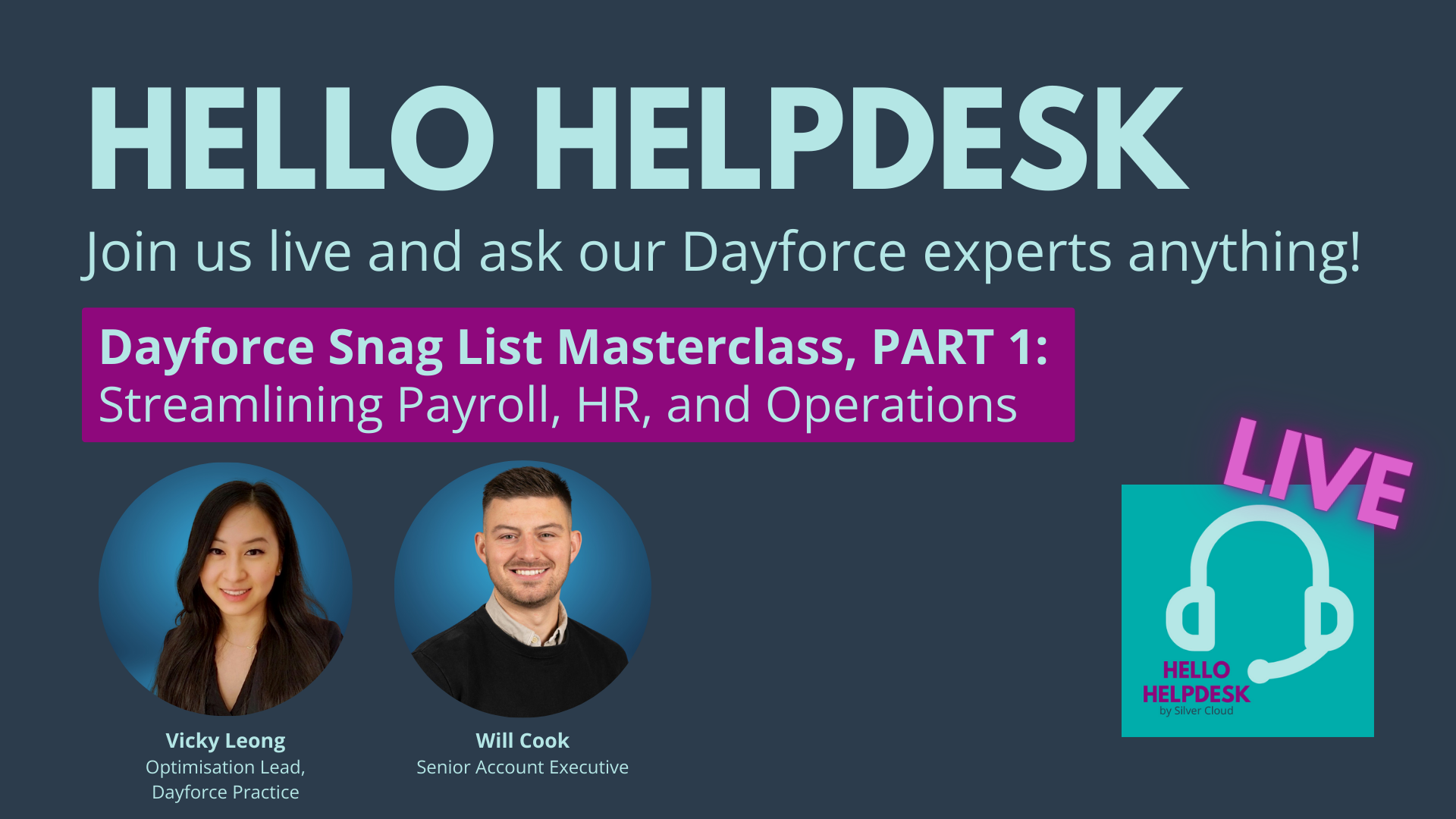Comparing Stand Alone vs Integrated HR & Payroll Systems | Insight
by Silver Cloud

It is often suggested that when choosing a new software solution, a single-platform integrated HR and payroll system is the only way to go, but in reality, this isn’t always the case.
Depending on your business needs, stand-alone systems (or what we refer to as the ‘best of breed’ approach) focusing solely on HR or payroll can be just as effective if not more effective than an integrated system that is attempting to be all things to all people.
What’s right for my business: integrated or stand-alone?
Each choice comes with its own set of pros and cons and before any decision is made, we always recommend that clients consider the specific needs of their business and how their chosen system will ‘fit’ with any ongoing HR, IT and business development plans.
Here’s our CEO Helen Armstrong, giving you the lowdown on stand alone vs integrated HR & payroll systems:
Key strengths of integrated HR and payroll systems
Integrated HR and payroll solutions are becoming more accessible thanks to the move to the cloud, with Tier 1 vendors such as Workday/Successfactors/Oracle and Tier 2s, such as CoreHR and iTrent, all developing in this area.
Post-GDPR, integrated systems that make it easier to correctly manage employee data are popular, particularly as this involves dealing with just one third party vendor as opposed to multiple.
Another perceived benefit of integrated systems is the ability to do cross functional reporting and analysis as opposed to trying to merge two data sets together (which would often involve assistance from the IT department) or having to pull the data into a separate data warehouse to analyse.
With a combined system too, data input is can be more secure and you can be confident that any confidential data will be automatically fed through your HR and payroll systems. This not only prevents issues surrounding duplicated data, but can also improve accuracy and reduce the risk of human error.
Recent client conversations have shown that organisations are keen to implement an integrated system as they believe them to be more time efficient and practical.
There is certainly merit in this thought-process; after all dealing with a single system means less training for both HR staff and employees. It also reduces the number and complexity of system integrations (which also need to be maintained), and can dramatically increase transaction efficiency as data will only need to be keyed in once.
From a practicality point of view, an integrated system also benefits from a consistent user experience for employees with just one set of login details to remember.
Stand-alone HR and payroll systems
Traditionally, stand-alone HR and payroll systems have been the preferred choice for companies looking to upgrade their software.
CascadeHR suggest that this is because historically, it has been commonplace for the two to exist as separate entities, with HR focusing on the full spectrum of employee-related processes and payroll centering upon monetary tasks.
Often however, businesses are surprised to learn that, through improvements in integration functionality and methods, stand-alone systems and their individual components can be integrated to work together effectively – giving much the same results as integrated options. And in our experience, compared to many best of breed approaches, the modules in an integrated solution can often be less than perfect.
A key benefit of using a stand-alone system is the relative ease in which businesses can change configuration if a business process has changed. Other than impacts on any reports and integrations, changes to stand alone systems needs less planning.
Stand-alone systems also offer businesses more control over their HR technology contracts. If or when difficulties arise, it is possible to move to a completely new piece of software without causing too much disruption – something that can’t be said of integrated systems. However, it should also be noted that multiple stand-alone systems may require greater maintenance throughout the year.
Each individual system will require regular system upgrades which, if not synced together, will require careful management to ensure that they take place in a timely fashion – after all, the last thing you want is for an HR system update to take place during a payroll run.
When it comes to the selection process itself, stand alone systems can be much more straightforward. As you will know, the needs of a payroll team (transactional) can be very different to the needs of an HR team (transformational), making the selection of integrated solutions that will work for both areas, much harder.
A selection process led by Payroll for example, can inadvertently impact upon the overall usability user experience as chosen systems are often built with a ‘payroll-first’ rather than ‘user-first’ approach.
With so many options available in the market place, researching different HR and payroll systems can be daunting for even the most experienced HR managers.



